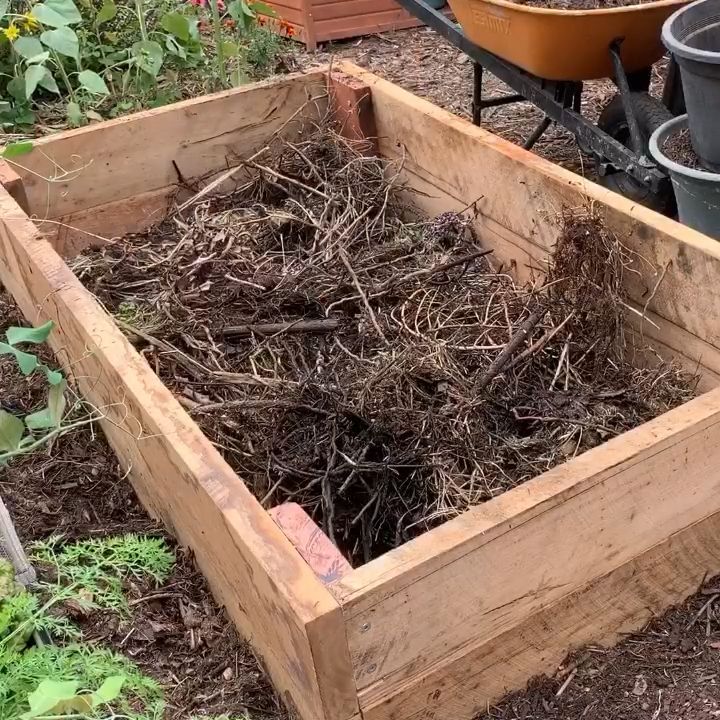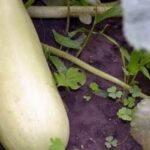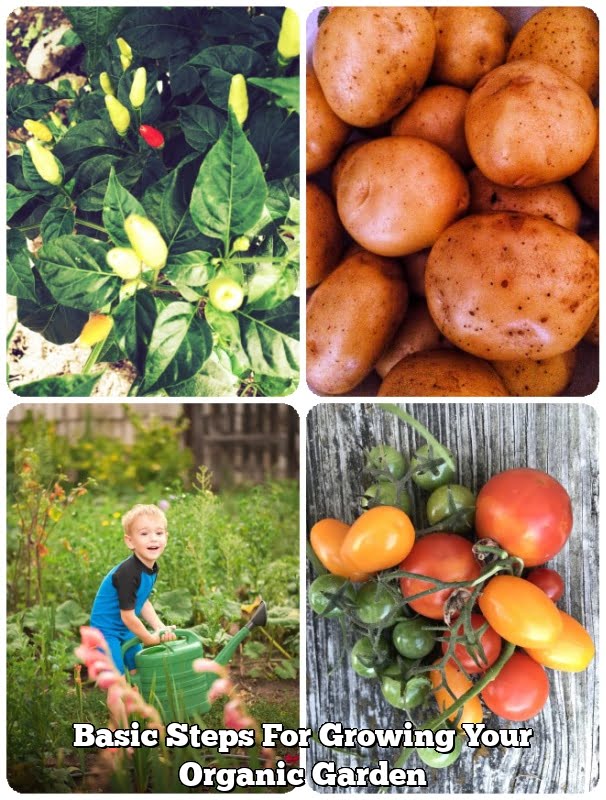Are you interested in starting your own vegetable garden but don’t know where to begin? Look no further. In this article, we will cover the essential information you need to know to get started on your basic vegetable gardening journey.
Whether you’re a beginner or just looking to brush up on your skills, this article will provide valuable insights and tips for successful vegetable gardening. If you’re looking for more in-depth knowledge, consider picking up a basic vegetable gardening book to accompany your learning.
Starting a vegetable garden offers numerous benefits, from providing fresh and nutritious produce for your family to reducing stress and promoting physical activity. We will explore the advantages of growing your own vegetables and how it can positively impact your overall well-being.
Before diving into the world of vegetable gardening, it’s important to choose the right location for your garden. Factors such as sunlight, soil quality, and water access play crucial roles in the success of your garden. We will discuss these factors in detail so that you can make informed decisions when selecting the perfect spot for your vegetable garden.
Benefits of Starting a Vegetable Garden
Starting a vegetable garden has numerous benefits that go beyond just having fresh produce at your fingertips. The act of growing your own food can have a positive impact on your physical and mental well-being, as well as the environment.
Physical and Mental Health Benefits
Gardening is not only a great way to get some exercise, but it also provides a sense of accomplishment and purpose. Digging, planting, weeding, and harvesting all involve physical activity that can contribute to overall fitness. Additionally, spending time in nature and being exposed to sunlight can have positive effects on mental health, reducing stress and anxiety.
Environmental Benefits
Growing your own vegetables also has environmental benefits. By choosing organic gardening methods and minimizing the use of synthetic pesticides and fertilizers, you can reduce the amount of harmful chemicals entering the environment. Additionally, homegrown produce often requires less packaging than store-bought vegetables, decreasing the amount of waste generated.
Economic Benefits
In addition to improving personal health and environmental sustainability, starting a vegetable garden can also lead to economic benefits. Growing your own food can help save money on grocery bills in the long run, especially if you usually purchase organically grown produce. With proper planning and maintenance, a well-tended vegetable garden can provide a bountiful harvest throughout the growing season.
Overall, there are many benefits to starting a vegetable garden beyond simply having access to fresh produce. These advantages make it clear why so many people are drawn to this rewarding hobby. If you’re looking for more information on how to get started with basic vegetable gardening bookuggestion or resources may be helpful for further guidance.
Choosing the Right Location for Your Garden
When it comes to vegetable gardening, choosing the right location for your garden is crucial for the success of your plants. The first thing to consider is sunlight. Most vegetables need at least 6 hours of direct sunlight per day, so it’s important to choose a spot in your yard that receives adequate sunlight. South-facing locations are usually ideal for vegetable gardens as they receive the most sunlight throughout the day.
In addition to sunlight, you’ll also want to consider water drainage. Vegetables do not like wet feet, so it’s important to choose a location with good drainage to prevent waterlogged soil, which can lead to rot and disease in your plants.
Checking the soil’s drainage before planting can be helpful – you can do this by digging a hole about 1 foot deep and filling it with water. If the water drains within a few hours, you have good drainage.
Another factor to consider when choosing a location for your vegetable garden is proximity to a water source. Watering is an essential part of vegetable gardening, so having easy access to a water source will make your gardening experience much more convenient. Whether you plan on using a hose or watering cans, having easy access to water will save you time and effort in maintaining your garden.
| Factor | Consideration |
|---|---|
| Sunlight | Choose a spot with at least 6 hours of direct sunlight per day |
| Water Drainage | Ensure good drainage by checking soil’s ability to drain water quickly |
| Proximity to Water Source | Choose a location near a water source for easy and convenient watering |
Essential Tools and Equipment for Vegetable Gardening
When starting a vegetable garden, it is essential to have the right tools and equipment to ensure the success of your gardening endeavor. Having the proper tools and equipment not only makes gardening more efficient but also helps maintain the health of your plants. Here are some essential tools and equipment that every beginner in vegetable gardening should have:
Garden Hoe and Rake
These two tools are vital for soil preparation and maintenance. A garden hoe is used for breaking up soil, weeding, and shaping planting rows, while a rake is necessary for leveling the soil, removing debris, and spreading mulch.
Trowel and Hand Fork
A trowel is a small hand tool used for digging small holes for plants and transplanting seedlings. On the other hand, a hand fork is perfect for loosening soil, removing weeds, and mixing in compost or fertilizer.
Watering Can or Garden Hose
Proper watering is crucial in vegetable gardening. A watering can or garden hose with a nozzle attachment will help you accurately water your plants without causing damage to them.
Garden Gloves
To protect your hands from blisters, thorns, insects, and soil-borne diseases, it’s important to wear high-quality garden gloves when working in your vegetable garden.
Additionally, other essential equipment includes a wheelbarrow or garden cart for transporting heavy materials such as mulch or compost; pruning shears or scissors for trimming plants; a shovel for digging; plant markers for labeling different vegetables; and a compost bin for recycling organic waste into nutrient-rich compost for your garden. With these tools and equipment at your disposal, you will be well-equipped to start and maintain a successful vegetable garden.
Selecting the Best Vegetables for Your Garden
When it comes to selecting the best vegetables for your garden, it’s important to consider your location, climate, and the amount of sunlight your garden receives. Here are some popular vegetables that are relatively easy to grow and are suitable for most beginner gardeners:
1. Tomatoes – Tomatoes are a favorite among many gardeners due to their versatility and delicious taste. They thrive in sunny locations and can be grown in containers or directly in the ground.
2. Lettuce – Lettuce is a great choice for beginner gardeners as it grows quickly and easily. It’s also a versatile vegetable that can be grown in both spring and fall.
3. Green Beans – Green beans are low-maintenance vegetables that produce an abundant harvest. They can be grown along trellises or other support structures.
In addition to these, carrots, peppers, and cucumbers are also great options for beginner vegetable gardens. It’s important to research each vegetable’s specific growing requirements to ensure a successful harvest.
Remember, starting with vegetables that are well-suited to your climate and gardening experience will increase your chances of a successful harvest. If you’re looking for more in-depth information on selecting the best vegetables for your garden, consider referring to a basic vegetable gardening book for comprehensive guidance on choosing the right vegetables for your specific gardening needs.
Happy planting.
Planning and Designing Your Vegetable Garden Layout
When planning and designing your vegetable garden layout, it’s essential to consider the space you have available, the types of vegetables you want to grow, and how much time you can dedicate to maintenance. Here are some tips to help you create an efficient and productive garden layout:
1. Assess your space: Measure the area where you plan to grow your vegetables and consider factors such as sunlight exposure, soil quality, and access to water. This will help you determine the best placement for your garden beds or containers.
2. Consider companion planting: Some vegetables grow well together and can even help protect each other from pests or enhance each other’s growth. Research companion planting techniques to maximize the space in your garden and increase the overall health of your plants.
3. Use raised beds or containers: If you have limited space or poor soil quality, raised beds or containers can be a great option for growing your vegetables. They allow for better control over soil quality and drainage, as well as easier maintenance and harvesting.
4. Create pathways: Designate pathways between your garden beds to provide easy access for watering, weeding, and harvesting. This will prevent compacting the soil in your growing areas while also making it more convenient for you to tend to your plants.
By following these tips, you can create a well-organized vegetable garden layout that optimizes space, facilitates healthy plant growth, and makes maintaining your garden more manageable.
Remember that planning is key when starting a vegetable garden, whether it’s big or small. If you’re looking for more detailed advice on how to plan and design the perfect vegetable garden layout, be sure to check out a basic vegetable gardening book like “The Vegetable Gardener’s Bible” by Edward C. Smith or “All New Square Foot Gardening” by Mel Bartholomew for comprehensive guidance on this topic.
Basic Techniques for Planting, Watering, and Fertilizing
Planting, watering, and fertilizing are essential components of successful vegetable gardening. Proper techniques in these areas can lead to a bountiful harvest and healthy plants.
When it comes to planting your vegetables, it’s important to follow the guidelines provided for each specific plant. This includes the recommended depth for planting seeds or seedlings, spacing between plants, and ideal soil conditions. Make sure to read the instructions on seed packets or plant tags carefully before getting started.
Watering is crucial for the health of your vegetable garden. Most vegetables require consistent moisture, so it’s important to water them regularly, especially during dry periods. The best time to water is in the morning, allowing excess moisture to evaporate during the day and reducing the risk of disease.
Fertilizing is another key aspect of vegetable gardening. It’s important to provide nutrients to your plants throughout their growing season. Consider using organic fertilizers that are specifically formulated for vegetables, as they provide a balanced mix of essential nutrients without the use of harsh chemicals.
| Vegetable Gardening Technique | Tips |
|---|---|
| Planting | Follow specific guidelines for each plant. Read instructions on seed packets or plant tags carefully. |
| Watering | Water regularly; best time is in the morning. |
| Fertilizing | Use organic fertilizers; choose those specifically formulated for vegetables. |
By mastering these basic techniques for planting, watering, and fertilizing, you’ll be well on your way to a successful vegetable garden. And if you’re looking for more detailed information on these topics and others related to vegetable gardening, consider checking out a basic vegetable gardening book for additional guidance and inspiration.
Common Pests and Diseases in Vegetable Gardens
Pests and diseases can pose a significant threat to the success of your vegetable garden if not properly managed. It is crucial for every beginner gardener to be aware of the common pests and diseases that may affect their plants. One essential resource for learning about this topic is a basic vegetable gardening book, which can provide detailed information on identifying, preventing, and treating these problems.
One of the most common pests in vegetable gardens is aphids, which are tiny insects that can quickly multiply and damage your plants by sucking the sap from them. Another common pest is the tomato hornworm, which can devour entire tomato plants if not controlled.
In terms of diseases, powdery mildew and blossom end rot are frequent issues that affect vegetables such as tomatoes, cucumbers, and squash. A basic vegetable gardening book will offer guidance on how to identify these problems and explain effective strategies for managing them.
In addition to learning about specific pests and diseases, a basic vegetable gardening book will also provide valuable insights into organic pest control methods and disease prevention techniques. This information can help you maintain a healthy garden environment without relying on harmful chemicals. By being proactive in addressing potential issues and understanding how to manage them effectively, you can increase the likelihood of a successful harvest from your vegetable garden.
Harvesting and Maintaining Your Vegetable Garden
Once you have successfully planted and nurtured your vegetable garden, the next important step is to properly harvest and maintain it. Harvesting your homegrown vegetables can be a rewarding experience, but it also requires some knowledge and care to ensure that you get the best results from your efforts.
To begin with, it is crucial to understand the right time for harvesting each type of vegetable in your garden. Some vegetables such as tomatoes, peppers, and cucumbers are best picked when they are fully ripe, while others like lettuce and kale can be harvested at different stages of maturity. It is important to research and learn about the specific harvesting requirements for each type of vegetable in order to enjoy the best flavor and quality.
In addition to harvesting, maintaining your vegetable garden is an ongoing task that involves watering, weeding, and pest control. Ensuring that your plants receive adequate water during dry spells and removing weeds regularly will help them thrive.
Familiarizing yourself with common pests and diseases that can affect your vegetables will also allow you to take preventive measures or treat any issues that may arise. Investing in a good basic vegetable gardening book can provide you with valuable information on how to effectively maintain your garden throughout the growing season.
Recommended Resources and Basic Vegetable Gardening Bookuggestions
In conclusion, embarking on a vegetable gardening journey can be a rewarding and fulfilling experience for both novice and seasoned gardeners. With the right knowledge and resources at your disposal, you can cultivate your own fresh and organic produce right in your backyard. The benefits of starting a vegetable garden are numerous, from promoting sustainability and self-sufficiency to providing a source of physical activity and stress relief.
When it comes to selecting the best vegetables for your garden, it’s important to consider the climate and soil conditions in your area. Additionally, learning basic techniques for planting, watering, and fertilizing will ensure that your plants thrive and produce bountiful harvests. It’s also crucial to familiarize yourself with common pests and diseases that may affect your vegetable garden so that you can take preventative measures.
As you embark on your vegetable gardening journey, it’s essential to have the right tools, resources, and information at hand. One resource that can provide valuable guidance is a basic vegetable gardening book, which can serve as a comprehensive reference for all aspects of cultivating a successful garden. By following the tips and advice outlined in this type of resource, you can increase your chances of achieving a thriving vegetable garden full of healthy and delicious produce.
Frequently Asked Questions
What Is the Easiest Vegetable Garden for Beginners?
The easiest vegetable garden for beginners is one with low-maintenance plants like lettuce, tomatoes, and green beans. These plants are relatively easy to grow and don’t require a lot of special care or attention.
What Are the Basics of Vegetable Gardening?
The basics of vegetable gardening include selecting an appropriate location with good sunlight, preparing the soil by adding compost or organic matter, choosing the right vegetables for your climate and season, planting at the correct depth and spacing, watering regularly, and controlling pests and diseases as needed.
What Is the Basic Layout of a Vegetable Garden?
The basic layout of a vegetable garden typically includes planting beds that are arranged in rows or blocks with pathways in between for easy access. Gardeners may also incorporate raised beds, trellises for climbing plants, and space-saving techniques like interplanting different crops together to maximize yield. Good planning can help optimize space and improve overall plant health.

If you’re looking to get into vegetable gardening, or are just looking for some tips on how to make your current garden better, then you’ve come to the right place! My name is Ethel and I have been gardening for years. In this blog, I’m going to share with you some of my best tips on how to create a successful vegetable garden.





